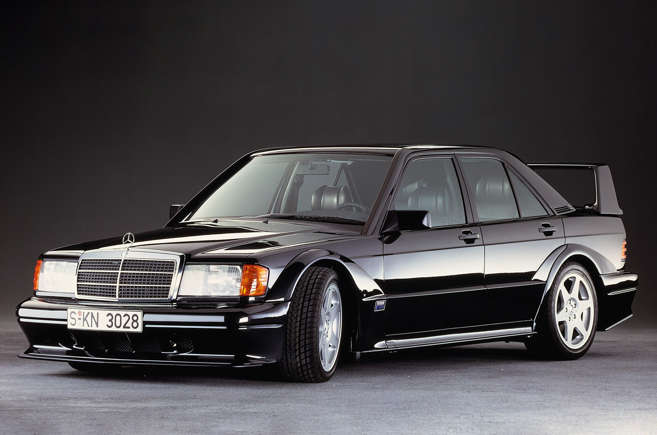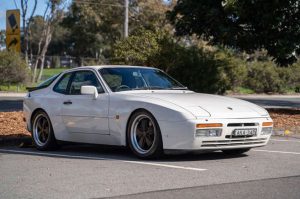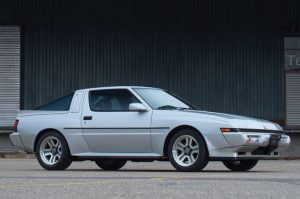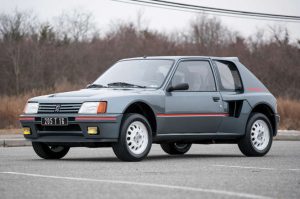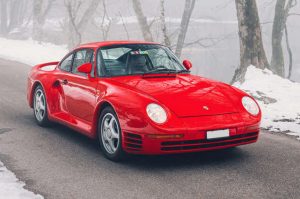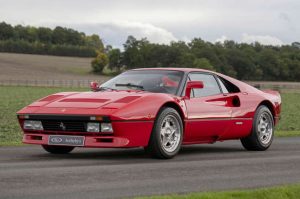Some Super Classic Box-arched Beautiful Cars You Need To Know
Developed from motorsport, the box-arched styling motif became one of the go-to aesthetic choices through the 1980s and ’90s, and beyond.
A new generation of classic-car lovers has driven interest in such models to new heights, proving that cars with larger-than-average wheelarches have an enduring appeal.
Here we’ve picked some of our favourite box-arched classic cars and presented them in chronological order. Of course, this isn’t a definitive list, but which of these is your favourite?
Muscular bodykits had appeared before the Renault 5 Turbo, most notably in the form of the Touring Car racing-inspired X-Pack Ford Capris, but the R5 Turbo was one of the wildest displays of box-arch brilliance in one of the smallest footprints.
The car is wild in general, with its mid-mounted, turbocharged, four-cylinder engine, rear-wheel drive and a concept-car-style interior.
Though the 911 is Porsche’s most famous product, were it not for the 924 and 944 selling in the units they did, it’s unlikely the Stuttgart firm would have survived the 1980s.
Where the 924 was, Carrera GT aside, sleekly delicate, the 944 upped the ante with wider wheelarches.
Plus, in turbo form, the 944 could even outpace a base-model 911.
Mitsubishi’s take on the Porsche 944 formula saw 2- and 2.6-litre turbocharged four-cylinder engines fitted in a sharply styled body.
The lower-powered, non-intercooler cars got the narrow body, leaving the full-on design for the high-performance models.
In addition to being one of the first turbocharged Japanese cars to have electronic fuel injection, the model had a significant presence on the motorsport scene, examples campaigned in rallying and circuit racing across the globe.
We could have picked the original Audi quattro for its wide-arched wonderfulness, but the Sport quattro wins for its sheer dedication to the cause.
This Group B homologation special not only had pumped-up wheelarches, but it was also much more powerful – and just 214 were produced.
Peugeot’s take on the Group B recipe may have some resemblance to a standard 205, but underneath the handmade, Heuliez-built body is an engine in the middle, a gearbox from a Citroën SM, four-wheel drive and an enormous turbocharger.
The result was the most successful Group B car in terms of championship wins, thanks to more than 400bhp.
The road cars aren’t as fast, with around half that power. You still would, though, wouldn’t you?
Though the 959 is often lumped in with the Group B programme, its motorsport association was a by-product, rather than the initial plan.
The 959 was really an exploration of what a Porsche could be beyond the 911, with racing a way of advancing product development.
In the end, the model’s competitive career was short-lived and fiery, and each example was sold with a 50% loss.
However, the car itself has become a legend, a twin-turbocharged, hyper-technology missile on wheels, capable of 197mph.
Much like the Porsche 959, the Ferrari 288GTO is often called a Group B car, but the germination of the project came from Enzo’s belief that his car maker’s range had become too humdrum – it needed a halo car.
The result was a 2.9-litre, twin-turbocharged, V8-powered supercar that looked like a 308 had taken performance-enhancing drugs.
There’s actually very little 308 left in the 288GTO, but, no matter.
The 288GTO is the rarest of all the Ferrari hypercars – and arguably the most road-usable.
The humble Austin Metro was a highly popular shopping car, so perhaps not the first thing you’d think of as a competition machine.
However, Williams Engineering saw things differently and the result was a naturally aspirated V6 in perhaps the wildest bodykit ever applied to a road-legal car.
In all, 200 roadgoing versions were built.
A true icon of Touring Car competition, the BMW E30 M3 was designed from the tyre tread up to punch above its weight in Group A racing.
While the turbocharged Ford Sierra RS 500 Cosworth notched up more outright wins, the M3’s relative simplicity, reliability and sharp handling helped deliver all-important class victories and multiple drivers’ titles.
The road cars were just as exciting, with one of the most balanced chassis ever made.
The rebirth of Lister in the mid-1980s saw Jaguars developed into ever-more powerful forms, with extroverted bodywork to match.
The most potent of these was a twin-supercharged, 7-litre XJ-S Le Mans, that if it was somewhat damp on the road required a brass neck as wide as the rear tyres.
Around 90 cars were converted. The engine went on to power the Lister Storm GT racing car.
While some might howl in derision at this car’s inclusion, for others this was the achievable dream, the step up from the SR model that so many owned, tweaked and adored.
The subtle, boxy wheelarches elevated the ultimate Vauxhall Nova above its shopping-car brethren, and though its performance figures seem tiny today, its minute weight meant it was a quick car for its time.
Today it’s a highly prized reminder of a much simpler era.
Though the Nissan Skyline would rise to international fame/infamy via Gran Turismo, for car enthusiasts Godzilla, as the Australians called it, was already a legend for its giant-killing deeds in Touring Car racing and beyond.
After the car became unbeatable in Australia, it trounced a host of big European names at the prestigious Spa 24 Hours race.
As a road car, the 2.6-litre twin-turbo straight-six had such tuneability that it became the thing to have for big power and bigger grins.
Mercedes-Benz was desperate to win Germany’s Touring Car championship, the DTM, but rivals BMW, Ford and Audi were getting in the way.
The solution was dramatic, with a wild bodykit fitted to the W201 190 that was shaped in the wind tunnel and applied to 501 roadgoing cars.
It still wasn’t quite enough initially, but the marque did eventually win the title in 1992.
By the end of the 1980s, wide wheelarches and big bodykits were immensely popular with tuning firms, away from the homologation needs of motorsport, which often required box arches for wider tracks and bigger tyres.
The Maserati Shamal was never intended for motorsport, but its brawny Marcello Gandini-designed appearance is magnificently polarising, bringing an extreme look to the often genteel grand-tourer market.
Its 3.2-litre twin-turbo V8 may pack a punch, but it’s actually a refined cruiser that looks like the ultimate autobahn bruiser.
